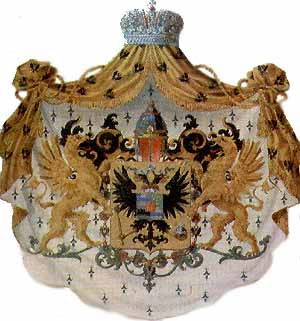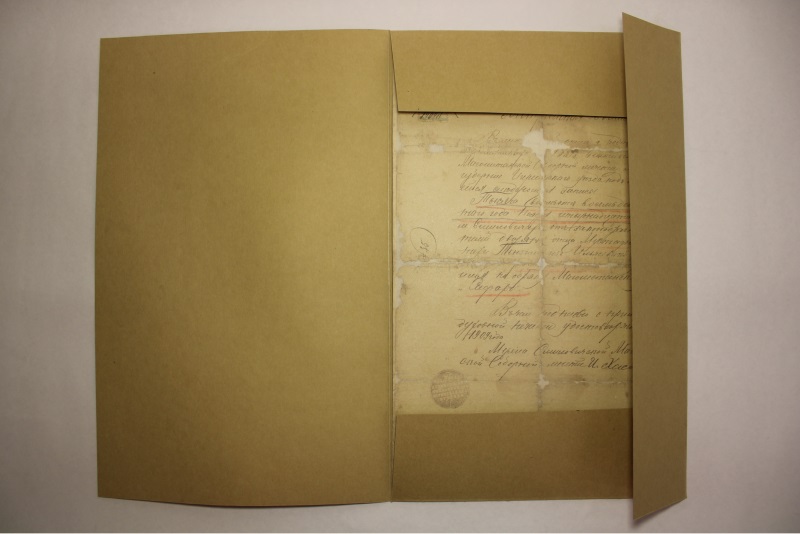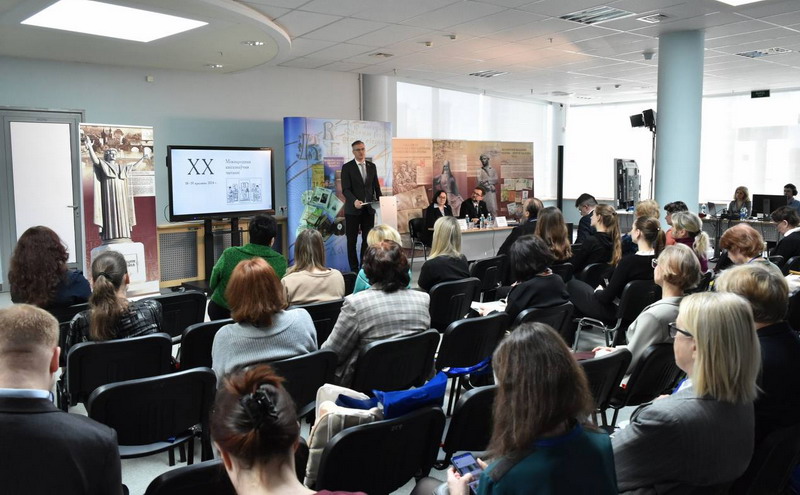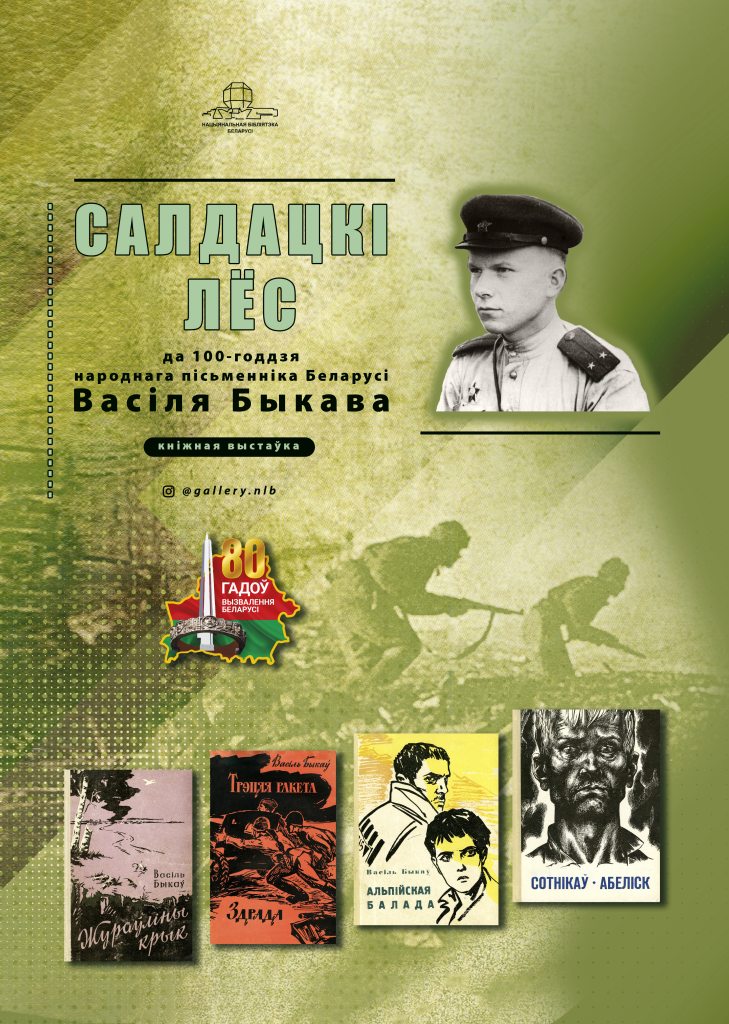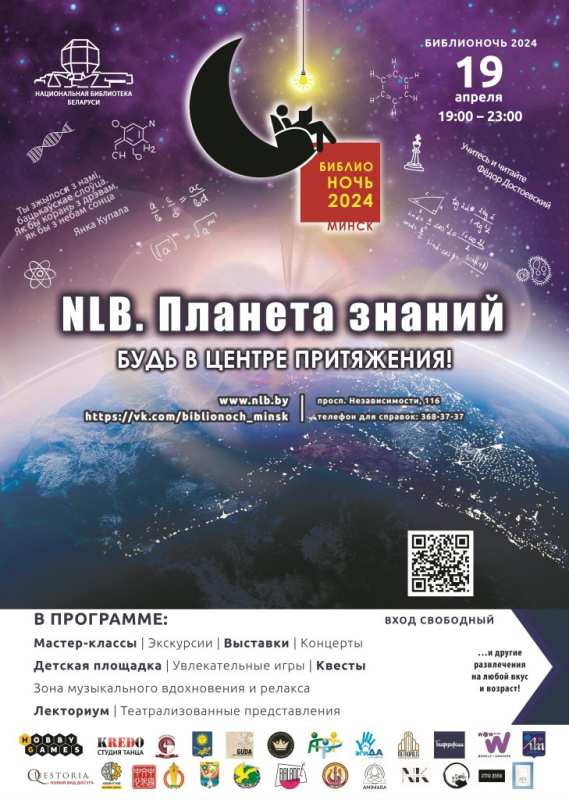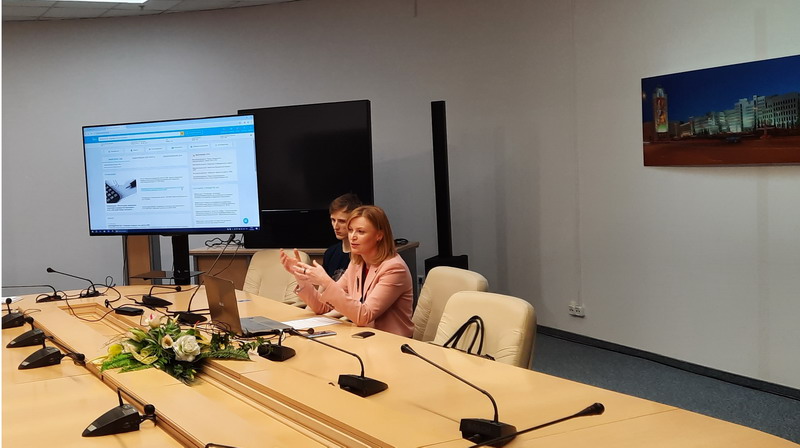From 28 January to 31 March, an exhibition “The origins of the Russian statehood and the Romanov dynasty” dedicated to the 400th anniversary of the Romanov House runs in the Legal information reading room (room 207b).
In 2013 Russia celebrates the 400th anniversary of the Romanov dynasty. Under the scepter of sovereigns from the Romanov House Russia overcame the state-political crisis in the beginnings of XVII century, became the empire and turned to one of the world powers. High rates of its economic development and successes in the field of social and cultural transformations gave the basis for optimistic forecasts for the future.
The adherence of the Russian people to ideals and traditions of the Orthodoxy was perceived as the major guarantee of its stability, power, prosperity and greatness.
The ancestor of the new imperial dynasty became Mikhail Fyodorovich Romanov who was elected tsar at Zemsky Sobor (“the assembly of the land”) in January, 1613. The assembly took place in the atmosphere of an extraordinary spiritual and patriotic rise. The two-stage procedure of Mikhail Romanov’s direct election solved the major task: to provide the sovereignty of the country and the prevalence of national interests over interests of possible overseas pretenders, over their claims to rule the country.
In the reign of Aleksey Mikhaylovich (1645–1676) the Sobornoye Ulozheniye – the legal code of All-Russian laws – was developed and adopted.
According to historian A.G. Mankov, the Sobornoye Ulozheniye of 1649 is an encyclopedia of Russian life of the 17th century. Being the main achievement of the reign of Aleksey Mikhaylovich, this grandiose, impressive and worked out perfectly code during more than two hundred years had played a role of the All-Russia legal act, remaining the most developed code of Russian laws. The speed with which it was accepted is not less surprising and worthy admiration too: all discussions and final acceptance of this 1 000-clause monument of legislation took only about 6 months – an unprecedented achievement even for modern parliaments!
Thus, by the middle of the 17th century the devastation and ruin of the times of intervention were basically overcome. Social, economic and political preconditions had prepared a new stage in the development of the Russian statehood. In the basis of this process there was a practical merge of all regions, lands and princedoms into one economic whole.
Russia reached a considerable progress in its economic, political and cultural development. However the backlog from the bourgeois countries (England, Holland) was obvious. The country needed serious transformations and the outlet to the sea to expand its connections with Europe. These problems were solved by the generation of the 18th century under the direction of outstanding state and military figure Peter I.
The reforms of Peter I (1682–1725) covered literally all spheres of state, political, socioeconomic and public life, having defined the future trends for the further development of the country as a great-power.
Instead of Boyarskaya Duma, in 1711 the Governing Senate – the supreme administrative authority – was established. In 1718, within the central administration there were established collegiums every of which controlled the certain state financial and economic branch. The major were the collegium of foreign affairs, the military and admiralty collegiums.
First of all the social basis of absolutism – the nobility – was seriously strengthened. The legacy edict (23 March, 1714) favored it, and the”Table of ranks” adopted on 24 January, 1722, promoted its further reinforcement. This Table, being an original "skeleton" of the Russian state, defined for many decades the character of social relations in the country.
The political system of Russia finally gets the character of an absolute monarchy. The proclamation of Peter I “The Great Emperor and the Father of Fatherland” in 1721 became its culmination. Thus Russia turned into the empire, received the status of the great power, and its international authority invariable grew.
When Ekaterina II (1762–1796) became an Empress, the autocratic power started to gain strength promptly. The new reform of the senate restrained considerably its governmental functions.
Measures for the strengthening of the state machinery in places and the increasing of the role of local nobility had a great value.
In 1785 Ekaterina II signed the charters to nobility and cities which noticeably strengthened and expanded their rights and privileges.
In the reign of Pavel I (1796–1801) the “golden age” of nobility finished. It was placed under the rigid control of administration. At the same time the power of landowners over serfs was a little bit limited.
The 19th century has a very important place in the imperial period of the Russian state. It is marked with a number of reforms most significant of which became the reforms of M.М. Speransky and the reforms of Emperor Alexander II.
These efforts resulted in the publication in 1833 of the 15-volume”Code of Laws of the Russian Empire” where all the legislation of Russia was collected: from the Sobornoye Ulozheniye of 1649 to modern laws. It came into force to regulate the life of Russian society and state up to 1917.
A quick development of capitalism, appearance of new powerful social forces demanded from Emperor Alexander II to reconstruct radically both internal policy and the system of social relations.
First of all, it concerned the abolition of selfdom in 1861. Peasants received landed property and personal liberty.
The zemstvo reform became a very important step on the way to liberalization. Their legal bases are the edict of 1 January, 1864 and the “Statutes on Provincial and District Zemstvo”. The zemstvo becomes the all-estate organ of local self-government.
On 16 July, 1870 the municipal reform came into force. It introduced administrative organs (the municipal Duma), executive organs (the town council), and an elected mayor who was the chairman of both municipal organs.
The judicial reform became the most democratic in the world historical practice of the second half of the 19th century and one of the most significant for the Russian statehood. Since 1864 juries had appeared.
After defeat in the Crimean war (1853–1856) there emerged the necessity of reforming the armed forces. The difficult, explosive international situation demanded powerful and efficient army and fleet. Since January 1874 the general compulsory military service had been introduced instead of the system of recruitment.
In the early 20th century Russia survived a sequence of upheavals – revolutions and wars. Attempts of the imperial government to prevent the increasing all-round crisis in society failed. At the same time the new ideas of revolutionary changes found understanding at a part of population of the country, and that predetermined the break-up of the old regime.
After the demise of Emperor Nicholas II on 3 March, 1917, the Russian autocracy stopped existing. The mistaken ideas brought the Russian intelligentsia and the Russian people to the tragic downfall of the thousand-year monarchic authority in Russia, the authority lawful and consecrated by century-old traditions which reached its culmination during the reign of the Romanov dynasty.
It is necessary to recognize with all objectivity that, in the historical evolution of the Russian statehood, the epoch of the Romanov dynasty is the greatest phenomenon which fundamental, world-wide-historical, geopolitical and cultural value can be estimated at its true worth as the phenomenon of universal historical importance. Without Russia, in the 17th – 20th centuries Europe and the whole world would have had other historical destiny, other religious and confessional structure, other character of art culture.
The offered exhibition contains about 50 documents and includes the following thematic sections:
- The Sobornoye Ulozheniye of 1649 – the code of Russian feudal law;
- The main legislative acts of representatives of the Romanov dynasty;
- The Code of Laws of the Russian Empire as the first experience in classification of Russian legislation.
The exhibition is designed for lawyers, historians, research workers, university professors and students and also for everyone who is interested in history.
Contact phone number: (+375 17) 293-27-28.
Useful links
Documents
- Legal acts of the Russian Empire
- Russian legislation. The Code of Laws of the Russian Empire (in16 volumes)
- The Code of Laws of the Russian Empire (in16 volumes)
- The complete set of laws of the Russian Empire (three editions)
 |
 |
 |
 |

